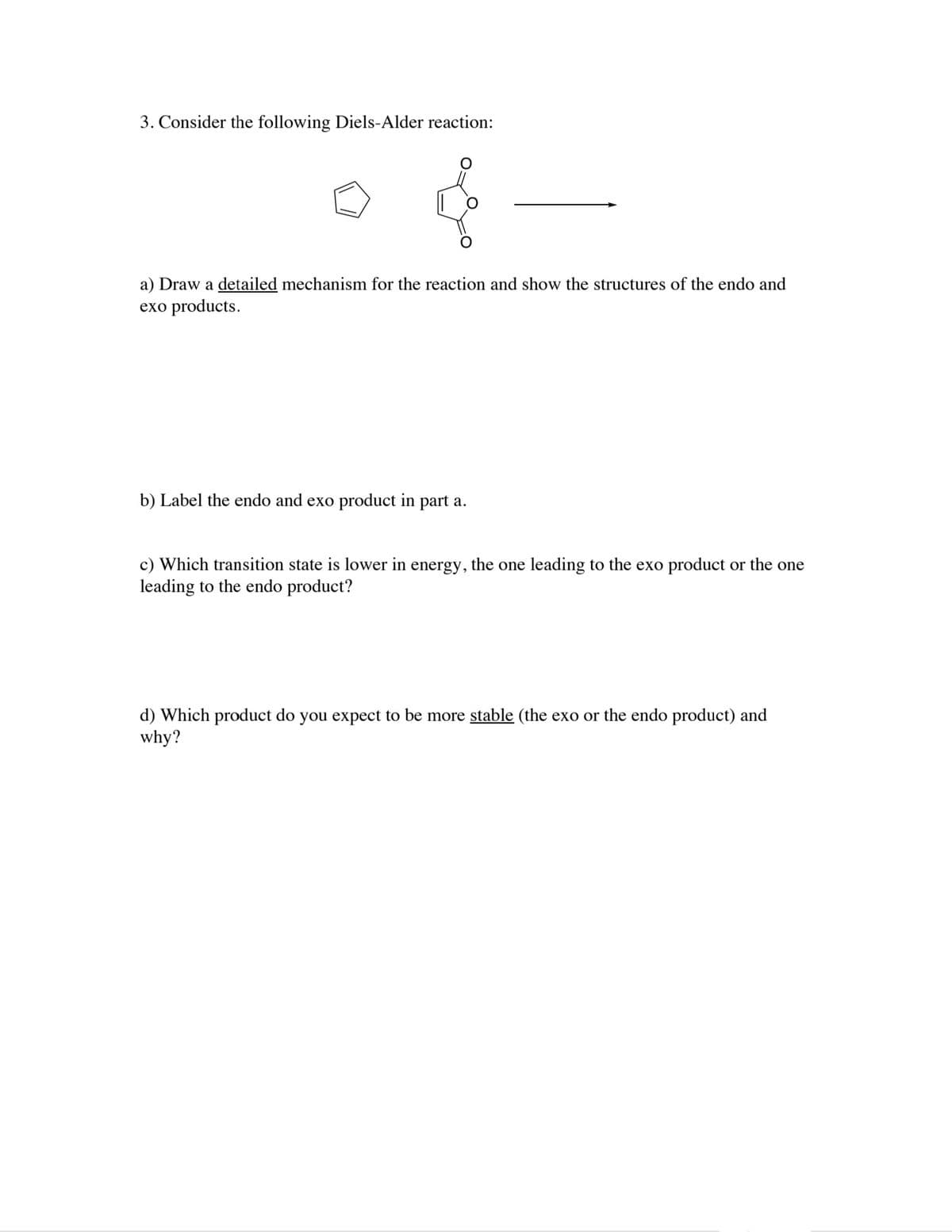e) Using your answers to part c and d, draw the reaction co-ordinate diagram for the Diels-Alder reaction shown above. Which product do you expect to be favored at high temperatures, and which product at low temperatures (which product is the kinetic product and which one the thermodynamic product)? 3. Consider the following Diels-Alder reaction: a) Draw a detailed mechanism for the reaction and show the structures of the endo and exo products. b) Label the endo and exo product in part a. c) Which transition state is lower in energy, the one leading to the exo product or the one leading to the endo product? d) Which product do you expect to be more stable (the exo or the endo product) and why?
e) Using your answers to part c and d, draw the reaction co-ordinate diagram for the Diels-Alder reaction shown above. Which product do you expect to be favored at high temperatures, and which product at low temperatures (which product is the kinetic product and which one the thermodynamic product)? 3. Consider the following Diels-Alder reaction: a) Draw a detailed mechanism for the reaction and show the structures of the endo and exo products. b) Label the endo and exo product in part a. c) Which transition state is lower in energy, the one leading to the exo product or the one leading to the endo product? d) Which product do you expect to be more stable (the exo or the endo product) and why?
Organic Chemistry: A Guided Inquiry
2nd Edition
ISBN:9780618974122
Author:Andrei Straumanis
Publisher:Andrei Straumanis
Chapter14: Elimination
Section: Chapter Questions
Problem 22E
Related questions
Question

Transcribed Image Text:e) Using your answers to part c and d, draw the reaction co-ordinate diagram for the
Diels-Alder reaction shown above. Which product do you expect to be favored at high
temperatures, and which product at low temperatures (which product is the kinetic
product and which one the thermodynamic product)?

Transcribed Image Text:3. Consider the following Diels-Alder reaction:
a) Draw a detailed mechanism for the reaction and show the structures of the endo and
exo products.
b) Label the endo and exo product in part a.
c) Which transition state is lower in energy, the one leading to the exo product or the one
leading to the endo product?
d) Which product do you expect to be more stable (the exo or the endo product) and
why?
Expert Solution
This question has been solved!
Explore an expertly crafted, step-by-step solution for a thorough understanding of key concepts.
Step by step
Solved in 2 steps with 2 images

Recommended textbooks for you

Organic Chemistry: A Guided Inquiry
Chemistry
ISBN:
9780618974122
Author:
Andrei Straumanis
Publisher:
Cengage Learning

Organic Chemistry: A Guided Inquiry
Chemistry
ISBN:
9780618974122
Author:
Andrei Straumanis
Publisher:
Cengage Learning